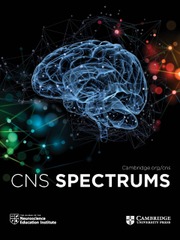Article contents
Altered dynamic interactions within frontostriatal circuits reflect disturbed craving processing in internet gaming disorder
Published online by Cambridge University Press: 21 September 2020
Abstract
Individuals with internet gaming disorder (IGD) are generally characterized by impaired executive control, persistent game-craving, and excessive reward-seeking behaviors. However, the causal interactions within the frontostriatal circuits underlying these problematic behaviors remain unclear. Here, spectral dynamic causal modeling (spDCM) was implemented to explore this issue.
Resting-state functional magnetic resonance imaging data from 317 online game players (148 IGD subjects and 169 recreational game users (RGUs)) were collected. Using independent component analysis, we determined six region of interests within frontostriatal circuits for further spDCM analysis, and further statistical analyses based on the parametric empirical Bayes framework were performed.
Compared with RGUs, IGD subjects showed inhibitory effective connectivity from the right orbitofrontal cortex (OFC) to the right caudate and from the right dorsolateral prefrontal cortex to the left OFC; at the same time, excitatory effective connectivity was observed from the thalamus to the left OFC. Correlation analyses results showed that the directional connection from the right OFC to the right caudate was negatively associated with addiction severity.
These results suggest that the disrupted causal interactions between specific regions might contribute to dysfunctions within frontostriatal circuits in IGD, and the pathway from the right OFC to the right caudate could serve as a target for brain modulation in future IGD interventions.
Keywords
- Type
- Original Research
- Information
- Copyright
- © The Author(s), 2020. Published by Cambridge University Press
References
- 9
- Cited by


